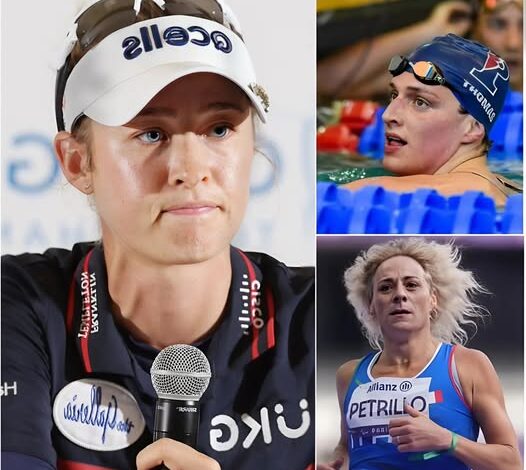“Nelly Korda Voices Strong Opposition to Transgender Participation in Women’s Olympics: ‘This Is Sports, Not a Platform for Gender Politics — It Must Be Fair for Everyone.’”
“Nelly Korda Voices Strong Opposition to Transgender Participation in Women’s Olympics: ‘This Is Sports, Not a Platform for Gender Politics — It Must Be Fair for Everyone.’”

When Nelly Korda declared, “I will stop supporting and investing in the Olympics if they allow L/G/B/T participation again… This is sport — not a platform for gender equality propaganda. We must ensure fairness for everyone,” she ignited a firestorm of controversy. Her words came shortly after she learned that Lia Thomas and Valentina Petrillo—two prominent transgender athletes—had registered to compete in women’s divisions at future Olympics. What followed was more than a media spectacle: it exposed a fault line in modern sport, between inclusion and fairness, between identity and competition.
Korda’s statement is provocative, blunt, and unyielding. It frames sport as a pure meritocracy rooted exclusively in the binary, biological assumptions of sex. In her view, allowing transgender athletes in women’s divisions upends the balance. By threatening to withdraw support and investments, she pressures the Olympic movement with leverage beyond athletic performance—money, reputation, and public sentiment. That gambit would force any organizing body to assess whether inclusivity’s moral call might be outweighed by financial risk.
At the heart of Korda’s demands lies the assertion of fairness. She insists sports regulators must protect a “level playing field.” Many who share her concern argue that even after hormone therapy and transition, transgender women retain physical advantages—strength, endurance, bone structure, or cardiopulmonary capacity—that confer an unfair edge in categories exclusively reserved for women. To them, the integrity of competition is threatened if biological distinctions are blurred. The requirement, then, is a reevaluation of rules: eligibility criteria, medical thresholds, and performance safeguards.
But Korda’s framing oversimplifies a more complex reality. For one, “L/G/B/T participation” is not a monolithic category. Transgender women, nonbinary athletes, and gay or lesbian athletes have very different relationships to competitive fairness. Lesbian or gay athletes typically raise no fairness concern, because sexual orientation does not alter biology. Transgender participation, however, sits in a more contested zone because of questions about physiology, hormone therapy effects, and residual advantages or disadvantages.
By conflating “L/G/B/T” into a single “movement,” Korda risks dismissing the distinct ethical and scientific debates that each identity raises. Worse, she frames inclusion as “propaganda,” an antagonistic and ideological intrusion into sport, which stokes division rather than nuance.

